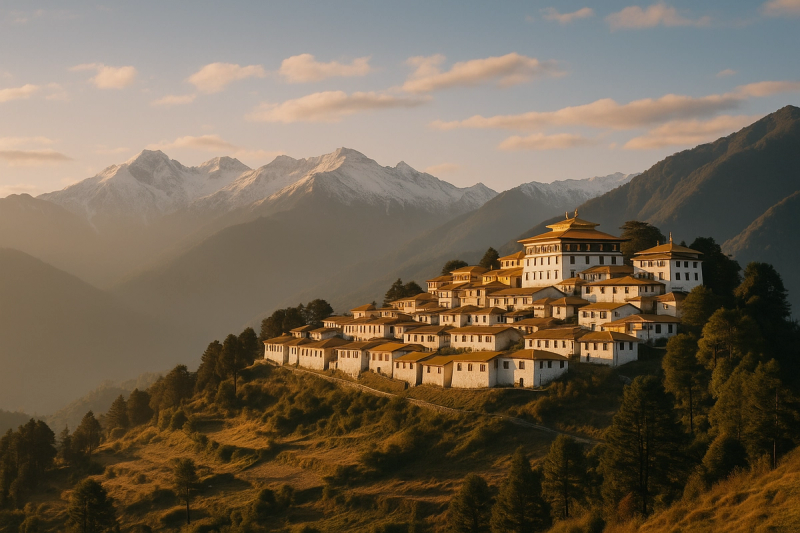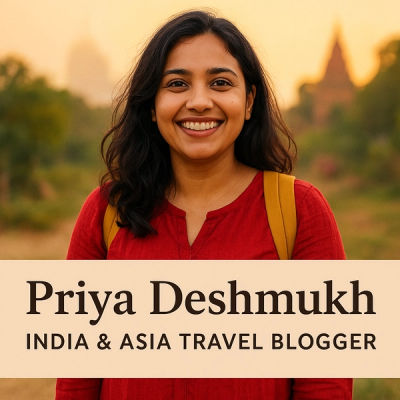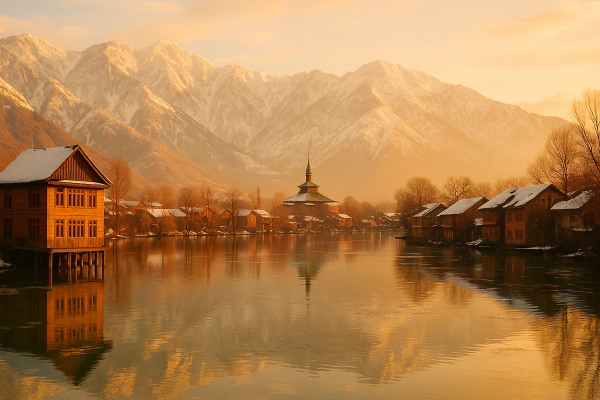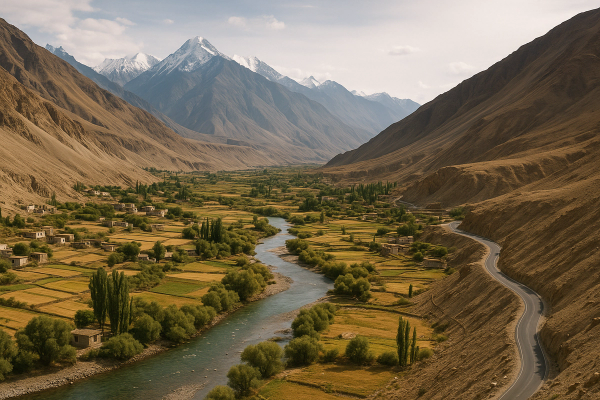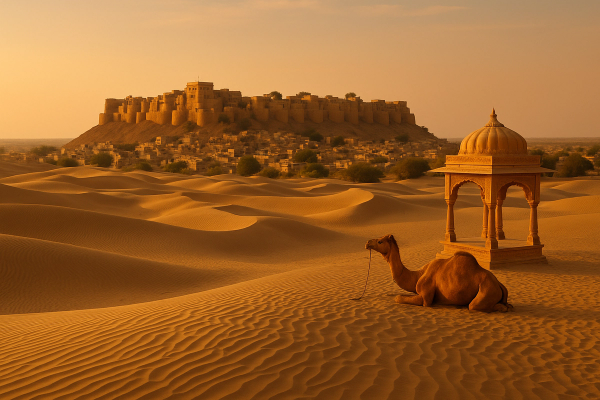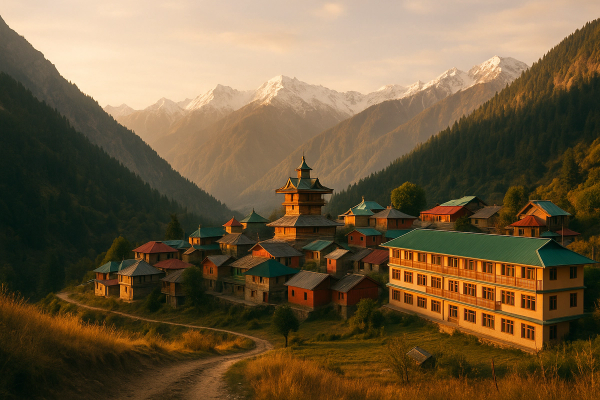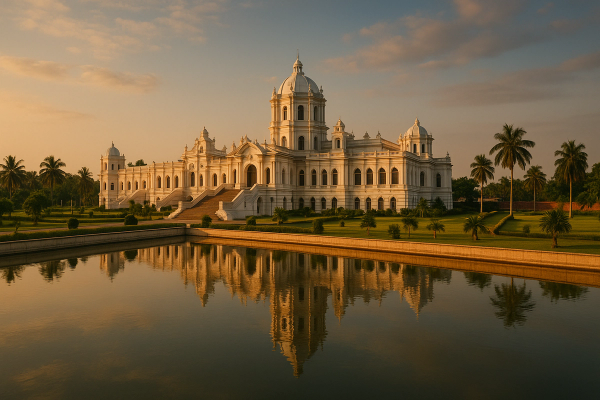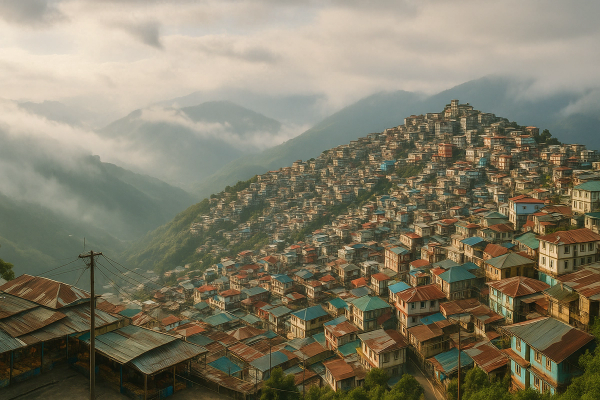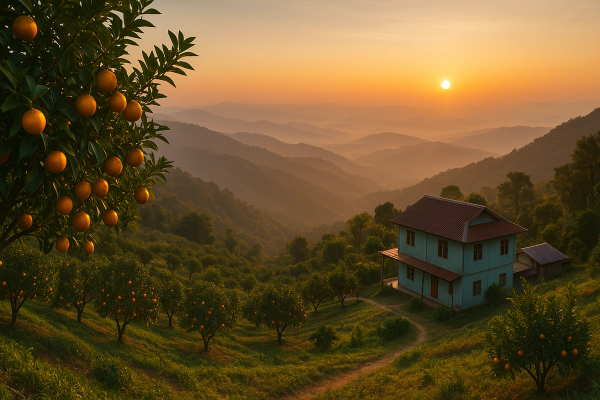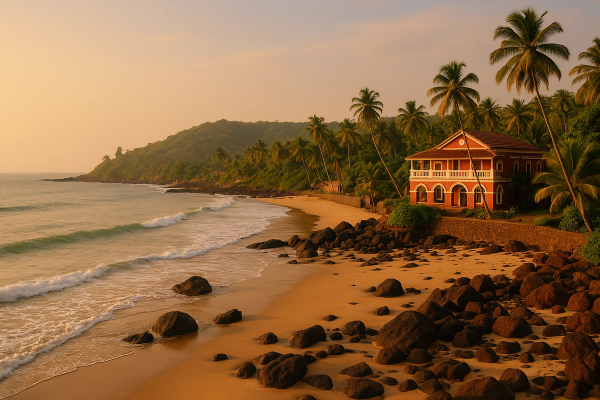Tawang, Arunachal Pradesh Travel Guide: Monasteries & Snow Passes — my honest, slightly messy notes from the road#
So, I finally did it. I went up to Tawang, way up in Arunachal Pradesh, chasing monasteries, snow passes, and that kind of quiet you only get in the mountains when the sky goes ridiculously blue. I’d seen photos, watched reels, listened to cousins going on about it for years. But being there… it hits different. The winds are colder than they look. Prayer flags are brighter. And the food? Hot thukpa after a bafflingly long drive is, basically, God’s hug. If you’re like me — fond of maps, chai stops, and chatting with strangers — Tawang’s your place. It’s not fancy. It’s honest. And it’ll make you slow down, whether you like it or not.¶
Getting there without losing your mind (and your patience)#
Long story short, most of us go via Guwahati. Fly in, grab a shared Sumo or a private taxi, break journey at Bomdila or Dirang, and then push to Tawang. It’s not a tiny hop — more like a 12–14 hour odyssey if you do it straight, which I don’t recommend unless you’re part mountain goat. Shared Sumos are the classic northeast way, noisy and a bit cramped but cheap-ish, usually around ₹1300–1800 per seat depending on the season and bargaining mood. Private taxis quote per kilometer, and it adds up. There’s an Arunachal State Transport service, but schedules can shift faster than the clouds. Pro tip: if you’re short on time, ask about the Pawan Hans helicopter service to Tawang — weather dependent, days vary. It’s not guaranteed, and pricing changes, but it can save your back and brain cells. Also, permits — Indians need an Inner Line Permit (ILP) for Arunachal. Do it online on the eILP portal, carry print or digital copy. Foreigners, Protected Area Permit, and you have to go through a registered operator. Don’t reach and then try to jugad it… you’ll waste a day.¶
First sight of the Tawang Monastery — why it’s not just a monument#
The Tawang Monastery (Gaden Namgyal Lhatse) is the big draw. Biggest monastery in India, founded in the 17th century, and honestly, it feels lived-in. You can see it from half the town, a whole complex sitting like it’s been there forever. Morning prayers are kind of mesmerizing — drums, long horns, and the low hum of monks chanting. I walked into the Dukhang, the main prayer hall, with cold hands and a bad mood from the journey, and stood in front of this tall golden Buddha and suddenly… quiet. No drama, just a sort of hush in my chest. The monastery has a museum with old manuscripts and masks, and a library that quietly says, we’ve been reading before you were born, beta. Be respectful — dress modest, remove your shoes, don’t poke cameras in faces. The courtyard is perfect for just… watching life. Kids running around, elderly monks chatting, prayer wheels rolling.¶
Monasteries & gompas you really shouldn’t skip#
- Tawang Monastery — the heart of it all. Give it time, not 30 minutes. Watch a prayer if you can.
- Urgelling Monastery — small, peaceful, birthplace of the 6th Dalai Lama. A short drive and worth it.
- Khinmey Gompa (Sunggi Phodrang) — bright, colorful, slightly less crowded, good for photos if you’re mindful.
- Gyangong Ani Gompa — a nunnery on a hill. If you like quieter spaces and tea that warms your bones, go here.
What I loved about the gompas around Tawang is how they are not made for tourists. You know, there’s a daily rhythm. Monks and nuns do their thing. Dogs nap in the sun. A nun at Gyangong gave me butter tea after I fumbled with my gloves, and it’s still the taste I associate with Tawang — salty, odd, perfect for wind and altitude. Urgelling is more reflective. And at Khinmey, the murals feel almost too saturated against the cold sky, but that’s exactly the charm. You don’t need to tick everything off. Pick a couple, sit, listen.¶
Snow passes: Sela Pass memories and the new Sela Tunnel change the game#
Sela Pass is the legendary one — at around 13,700 feet, with that silver-blue Sela Lake and the kind of cold that sneaks into your bones. Earlier, heavy snowfall would make the road close or crawl. Now, the Sela Tunnel (BRO really did a thing here) offers all-weather connectivity. It shaves off some time and, more importantly, reduces the stress of getting stuck for hours waiting on JCBs. As of early 2025, it’s working fine and most taxis prefer taking the tunnel if snow is bad. But if conditions allow, ask your driver to stop at the pass viewpoint. The lake is a mood — moody, dramatic, with prayer flags snapping in the wind. Carry layers, even in April. Rhododendrons bloom in spring, autumn skies go crystal, and winter is pure white magic… until it’s not and you’re wondering why your fingers don’t feel like fingers. Altitude is no joke here. Sip water, go slow, avoid running uphill like a hero.¶
Bum La Pass, PTSO Lake, and that wild high-altitude landscape#
Bum La is a border pass, and the whole experience is thrilling and sobering at the same time. It’s at around 15,000+ feet, and you need a special permit — arranged via the Office of the Deputy Commissioner in Tawang and confirmed by the Indian Army. Usually easiest through a local tour operator or your hotel. Very important: it’s typically only open to Indian nationals. Foreign travelers aren’t allowed up to Bum La. The drive itself goes past the famous Y-Junction and a string of high-altitude lakes. PTSO Lake is gorgeous and windy in a way that makes you squint. Sangetsar Lake (aka Madhuri Lake — yes, the Koyla film) is hauntingly beautiful, formed after the 1950 earthquake with tree trunks sticking out of glassy water. Hot noodles at the army canteen… chef kiss. Costs vary, but a day trip taxi to Bum La with lakes usually runs ₹4500–6000. Respect every army sign. Where it says no photography, it’s no photography. Don’t be that person.¶
Food in Tawang: thukpa, momos, and a lot of butter tea#
If you’re expecting giant multicuise food courts, you’ll be disappointed. If you want steaming bowls after a freezing walk, you’ll be very happy. Monpa and Tibetan food dominates — thukpa, thenthuk, gyapa khazi (Monpa-style fried rice with bits of egg or meat), momos that taste better when you have to warm your hands on the plate first. Try khura (Monpa buckwheat pancake) and churpi (yak cheese), which can be chewy and perfect with hot tea. Butter tea is a conversation — some people adore it, some don’t, I’m firmly in the middle. I had a plate of fried pork that, swear, made me want to kiss whoever cooked it. Most places around the Old Market and near the monastery serve the basics, decently priced. UPI works when the network works, which is not always, so carry cash. Also, don’t expect very late dinners — the town sleeps early, you should too honestly.¶
Stay options: homestays, heater dramas, and realistic budgets#
Tawang is not about luxury. It’s about warm quilts, slightly creaky rooms, and views that wipe out complaints. Homestays are the vibe, usually ₹800–1500 per night for a clean bed, basic bathroom, and conversations if you’re friendly. Mid-range hotels go ₹2000–3500, and a few fancier places push ₹4000–7000, especially near the market or with monastery views. Ask about heating — many places provide portable heaters and sometimes electric blankets. Power cuts are common at night, so choose stays with a generator, it changes your mood when the lights flicker. Book ahead in peak months (Oct–Nov, Dec–Jan snow time, and spring) because rooms fill up fast. If you’re breaking journey, Dirang is a great overnight stop, with better options and hot springs nearby. I once picked a homestay five minutes from the monastery and woke up to bells — not complaining.¶
Best time to visit — and what the weather actually feels like#
There’s no single right answer, because mountains have moods. Autumn (Oct–Nov) is my favorite — clear skies, crisp colors, great road conditions. Winter (Dec–Feb) brings snow, which is stunning and also inconvenient, but that’s the deal you make with winter. With the Sela Tunnel, the last few seasons haven’t shut the road as much, but you still get slippery patches and slower drives. Spring (Mar–May) brings rhododendrons and soft sunshine, and it’s lovely if you like flowers more than snow selfies. Monsoon (Jun–Sept) is lush, fewer tourists, but landslides and fog are legit risks. Pack layers. Always. A down jacket, fleece, beanie, gloves, and those cheap hand warmers are magic. Sunscreen is not optional — the UV at altitude will roast you even when you’re shivering. If you get altitude headaches, hydrate, keep moving slowly, and avoid alcohol on arrival. Trust me, I learned the hard, dumb way.¶
Culture, etiquette, and being a decent guest#
Simple rules. Dress modestly in monasteries, remove shoes as required. Don’t touch religious objects just because they’re pretty. If a monk or nun is praying, give space. Ask before photographing people. Drone use near the border is a massive no-no, and honestly not cool near monasteries either. Prayer flags aren’t souvenirs, don’t pull at them. The Tawang War Memorial is worth a visit — there’s a light and sound show in the evening that retells the 1962 war in a way that, weirdly, makes the cold feel warmer. It made me quiet. Also try the Tawang Craft Centre for local textiles and woodwork — good place to pick ethical souvenirs without going overboard. Keep plastic use low, carry your bottle. If you wouldn’t throw trash in your living room, don’t throw it here. Basic stuff but people forget.¶
Permits, money, networks — the boring but important bits#
- ILP for Indians — apply online before you travel. Carry a copy. Foreigners need PAP via operators.
- Bum La permits — through DC office and Army, usually arranged by hotels/tour operators. Only for Indian nationals.
- Cash is king. UPI works, then suddenly doesn’t. ATMs exist (SBI, etc.) but can run dry on busy weekends.
- Jio works okay-ish in town, Airtel patchy, BSNL is old faithful sometimes. Don’t depend on fast data.
- Download offline maps. Electricity can yo-yo, chargers and powerbanks are like your besties here.
- Army convoys have right of way. Don’t overtake like a hero on blind corners. It’s stupid and dangerous.
Lesser-known detours and a waterfall that’ll soak your soul#
Nuranang Waterfall (also called Jang Falls) sits between Tawang and Jang, and it’s a must if you like feeling tiny in front of water. It’s thundering, surrounded by mossy rocks, and you can get surprisingly close. I reached on a damp afternoon, and the mist just wrapped around everything… no filter needed. There’s sometimes a small entry fee, small stalls for tea. Go weekday mornings if you want fewer people in your frame. Near Dirang, if you’re doing a stopover, the hot springs are not fancy but they’re honest — warm, sulphury, and they unknot your shoulders. There’s also Urgelling, which I already mentioned, and small village walks where you bump into friendly dogs and slightly suspicious chickens. And craft center browsing when the wind is trying to freeze your eyebrows.¶
What it costs (roughly), and where you’ll overspend anyway#
I’m not going to pretend every rupee is the same for everybody, but here’s ballpark. Guwahati to Tawang by shared Sumo over two days with a Dirang stop will be the budget option, say ₹3000–4000 total for seats. Private taxi is way more, depends on the operator and your haggling stamina. In-town taxis for Bum La + lakes are usually bundled, ₹4500–6000 for the full route with permits handled. Food is reasonable — ₹150–300 per person for a meal depending on your appetite and whether you’re ordering pork and extra tea. Stay is where you can save or splurge. Tip: ask for rooms with sunlight. Sounds silly, but a sunny room in Tawang feels like central heating. Also ask if they can provide hot-water bottles at night. Some homestays do it happily, others look at you like you’re asking for a rocket.¶
Safety updates and what’s new lately#
Roads are improving around Tawang, and the Sela Tunnel means fewer snow-induced blocks on the main route. Still, winter is winter — expect delays, drive only in daylight if you can, and listen to local advice. Army and police checkpoints are normal, carry your ILP or PAP and valid ID. Photography restrictions near military areas are real. Festivals like Torgya (usually January) at the monastery are stunning — masked dances, energy, and crowds, so book early. Losar, the New Year, brings community celebrations and extra warmth. Tourism is growing, but it’s not crowded-crowded yet. I’ve heard of travelers relying purely on UPI and then getting stuck when the network drops, so I’m repeating myself here — carry cash. Also, altitude sickness doesn’t care how fit you are. If someone in your group feels dizzy or nauseous at Bum La, don’t push it. Head down, rest, hydrate. No shame in turning back.¶
A few things I wish someone had told me before I went#
- Mornings are bright but winds can be brutal. A neck gaiter is your best friend. Trust me.
- Don’t plan too many sites for one day. Distances look short, roads and vibes make them longer.
- Electric blanket sounds fancy until power trips at 2 am. Hot-water bottle > electric blanket.
- Keep some snacks for altitude drives — nuts, dark chocolate, ORS. The simplest things help most.
- Ask your driver to pause at tiny tea stalls. You meet the nicest people over watery milk tea.
- If you’re sensitive to smoke, carry a mask. Kitchen fires and roadside burning can sting in winter.
Why Tawang stayed with me#
There’s this thing mountains do… they strip you down to your basic self. Tawang did that gently. Between the gompas, the lake skies, the white-blue passes, and conversations with homestay hosts who remind you what generosity looks like, I felt small in the good way. I stood at Sangetsar watching the water go still, like it had a heartbeat, and my city brain finally shut up. I made clumsy mistakes too — got headaches from overexcitement, forgot cash once and had to borrow. But people help. They really do. If you’re thinking of going, go. Don’t overplan. Choose a few core things — monastery, Sela, Bum La if you can — and leave time to just be. You won’t regret it, unless you hate silence, then maybe bring a loud playlist. Just kidding. Kind of.¶
Wrap-up and where to poke around for more travel stories#
Tawang is not a checklist destination. It’s a long drive, a warm bowl, a wind that makes you tuck your hands deeper and watch prayer flags for no reason. With the Sela Tunnel, travel’s smoother than before, but it’s still a real mountain journey, not a quick weekend dash. Keep respect, keep patience, keep cash. And don’t forget to just stop and breathe. If you want more stories like this and slightly chaotic guides that still help you plan, I keep reading posts on AllBlogs.in — lots of India-focused travel notes that don’t sound like a textbook, which is exactly my vibe. Safe travels, and may your maggi always be hot at the pass.¶

